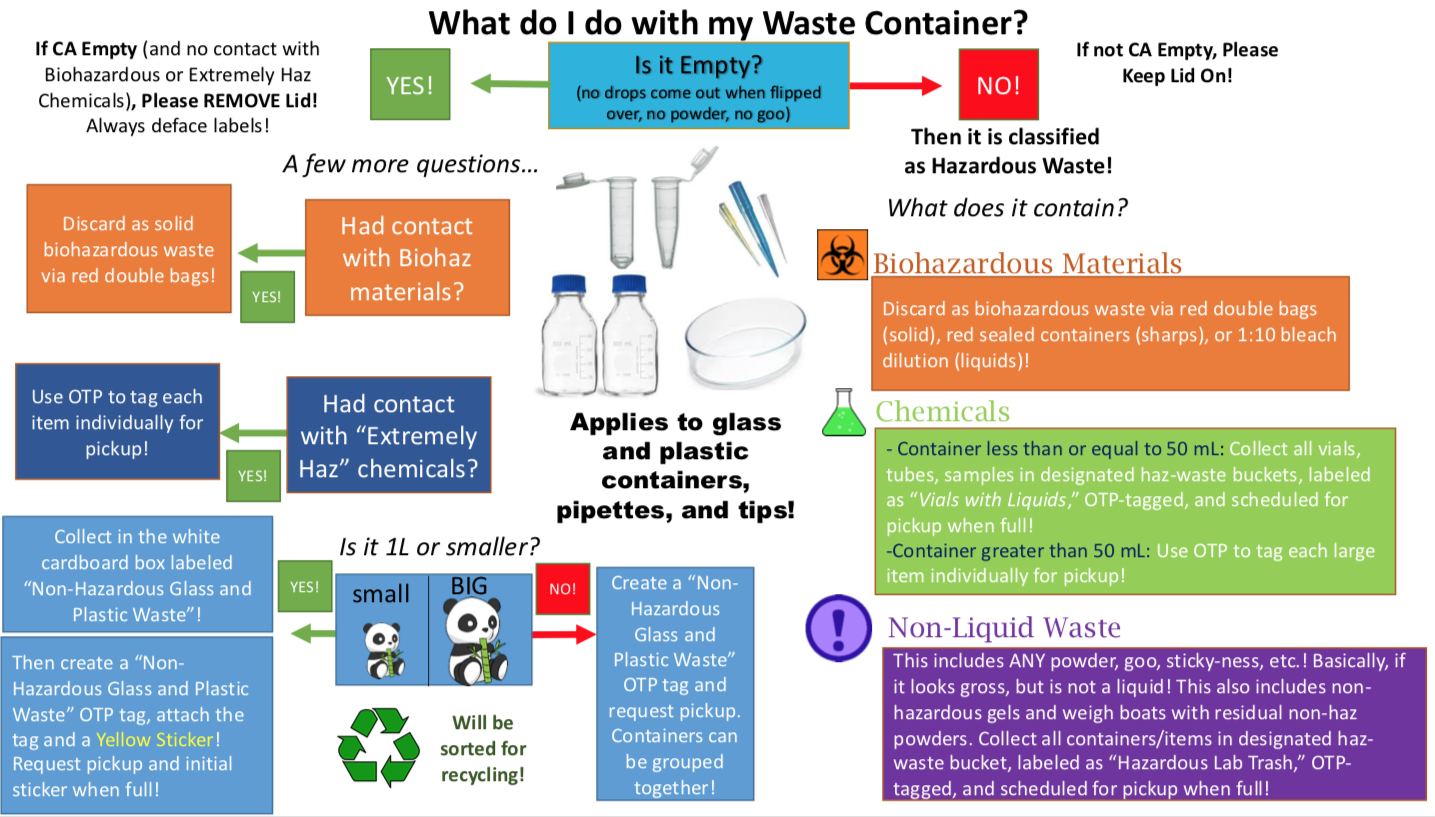Disposal and Decontamination
- Disposal of Unwanted Equipment through Surplus Sales
- Universal and Electronic Waste
- Hazardous Waste Guidelines
- Biohazardous and Medical Waste
Rule of thumb: If the waste material has a Safety Data Sheet, and you would be reluctant to eat, drink, or wear the material, it is probably a hazardous waste per California regulations.
Notice: Disposal of hazardous waste using sinks, intentional evaporation, or regular trash is against the law and strictly prohibited. Campus laboratories must abide by state and federal waste disposal requirements. Individuals may be held liable for violations of applicable laws.
For more information, contact the EH&S Environmental Management Facility at (858) 534-2753.
Liquid/Powder → EH&S Hazardous Waste Pick-up
Acrylamide in its liquid and powder form is highly toxic by inhalation, skin absorption, and ingestion. It is a reproductive toxin and a carcinogen. Extra precautions must be taken when handling liquid and powder acrylamide. All waste must be disposed of via EH&S as hazardous waste.
Uncontaminated Gel → Regular Lab Trash
Once acrylamide has been completely polymerized into a gel, it no longer poses a health threat and can safely be disposed of in the regular lab trash (as long as it has not come in contact with a hazardous material).
Contaminated Gel → EH&S Hazardous Waste Pick-up
Once the gel has been exposed to a hazardous chemical (e.g. loaded sample containing EtBr, run with a buffer that contains hazardous chemicals), then the gel must be disposed as hazardous waste through the EH&S waste tag and pick-up process (OTP). Although the gel itself might not be hazardous, exposure to hazardous chemicals resulted in a contaminated gel that must be processed for disposal as hazardous waste using the Online Tag Program, or OTP.
Ethidium bromide (EtBr) requires extra precautions during use and disposal because of its highly toxic and mutagenic properties.
All EtBr contaminated materials need to be disposed of as hazardous waste via EH&S. All waste containers must have a hazardous waste tag attached to them before hazardous waste is added.
There are three separate waste streams for EtBr:
Disposal pathways for both hazardous and non-hazardous laboratory waste varies greatly by type (e.g. broken glass, empty chemical container, razor blade) and associated hazard (e.g. chemical, sharps) as determined by campus EH&S in accordance with federal, state, and local officials. The flowchart [PDF] below outlines the logical progression of various waste stream pathways to better assist laboratories within the School of Biological Sciences.

Any further questions or concerns regarding waste management can be directed to the Division Safety Office at (858) 333-9791.